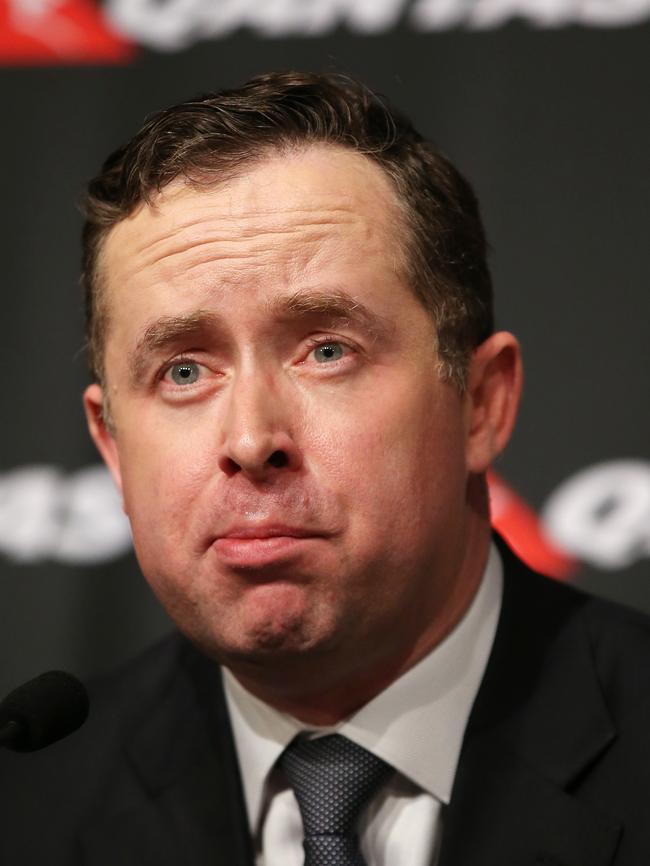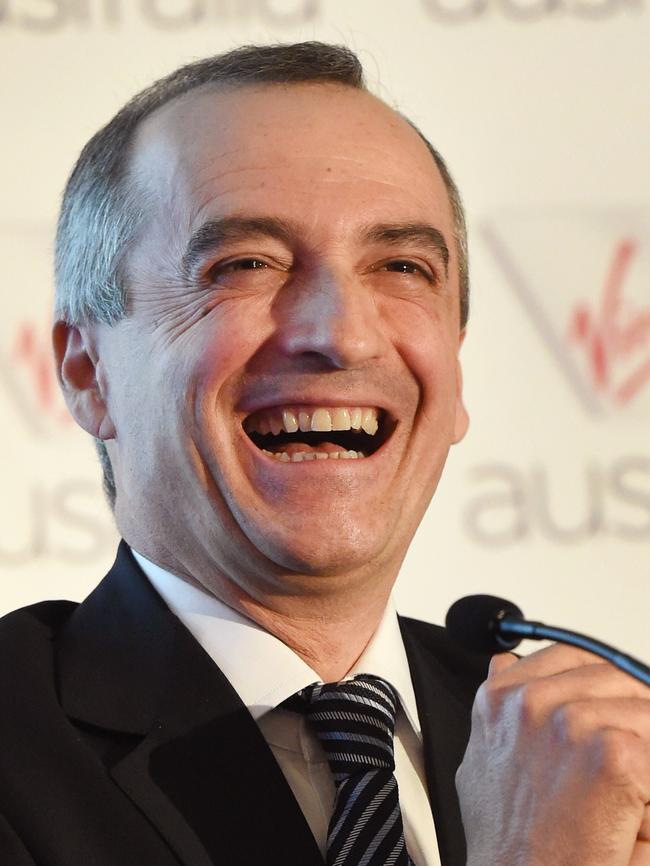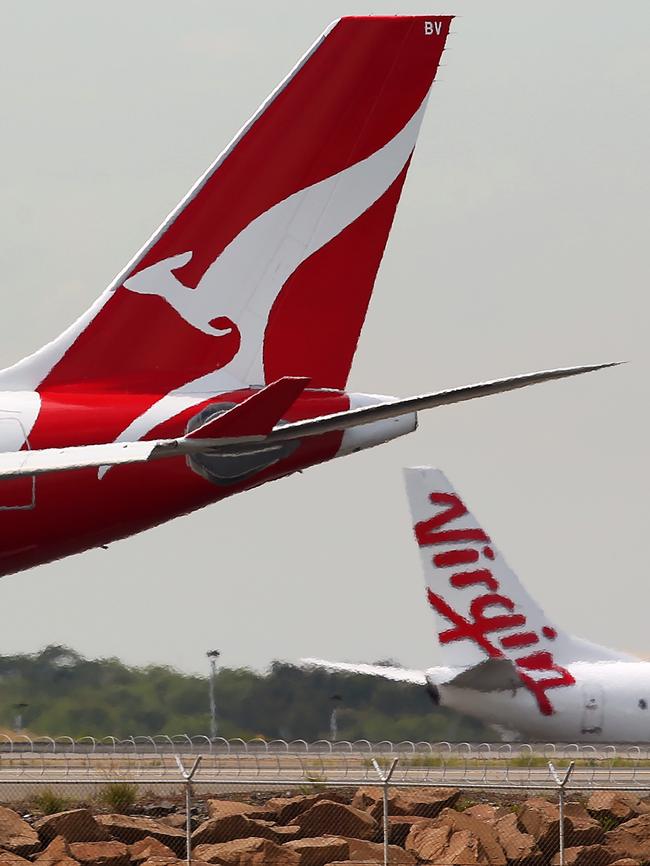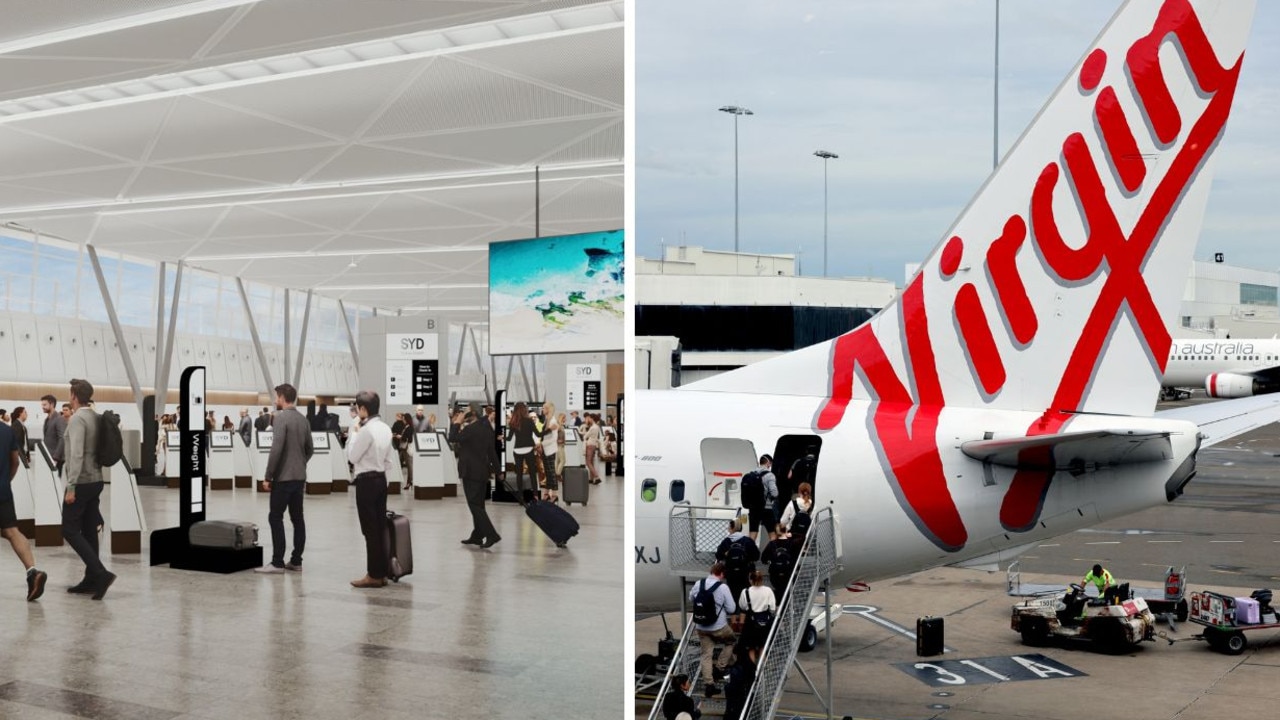Qantas v Virgin Australia: The war that cost $8.75m a day
THE bitter capacity battle waged between Qantas and Virgin’s CEOs has contributed more to their shocking financial results than anything else.
Travel
Don't miss out on the headlines from Travel. Followed categories will be added to My News.
WITH combined losses of more than $3 billion, Australia’s major airlines have never been in worse shape — and they have largely themselves to blame.
A bitter capacity war waged between the CEOs of Qantas Airways and Virgin Australia has contributed more to the shocking financial results posted by the two groups this week than anything else.
FARE GO? What the Qantas loss means to you
ALAN JOYCE: Saviour or destroyer?
By simply ignoring the most basic economic principle of supply and demand, the two airlines and their budget subsidiaries Jetstar and Tigerair, sank a further $8.75 million into debt every day they flew last year.
Greater fuel costs, the carbon tax and aggressive international competitors all took their toll but the biggest issue was a vast oversupply of seats.
Qantas was the worst offender with its confounding strategy of two services for every one of Virgin Australia’s in an effort to maintain its 65 per cent domestic market share.
Even when it became apparent the plan was backfiring with month after month of falling demand, the airline persisted, finally calling a halt to capacity increases in April.


Tigerair also added hundreds of thousands of seats with a new base in Brisbane and dozens of new services.
The result was the equivalent of more than a dozen jumbo jets flying empty all over the country each day.
Qantas bore the brunt of the misguided strategy by CEO Alan Joyce with its $2.8 billion loss for 2013-14, the worst in the group’s 90-year history.
The figure included a drastic slide in Qantas Domestic profits from $365 million in FY2013, to a comparatively miserable $30 million in FY2014.
Virgin Australia did not fare much better with a $355.6 million loss that included $59.2 million in the negative for the domestic segment.
Both groups have now placed a temporary stay on capacity growth to give demand a chance to “catch up” with supply.
However this week Mr Joyce refused to acknowledge the role of the capacity war in Qantas’s financial woes instead blaming budget uncertainty and fierce competition.
“There is nothing anybody in Qantas has done that has caused this issue,” he said.
Virgin CEO John Borghetti was more upfront acknowledging there was still “a hell of a gap” between supply and demand in the aviation market.
But he insisted Virgin was now in a much stronger position than its main competitor whose “slash and burn” approach to cost savings was at their own peril.
“No matter how much you try (not to), you will impact the service, and you will impact the product,” said Mr Borghetti.

It is well known Mr Borghetti jumped ship to Virgin Blue in 2010 after being overlooked for the top job at Qantas that went to Mr Joyce, whose background was in budget carriers.
A 40-year veteran of the industry, Mr Borghetti soon went about transforming Virgin Blue from a low cost carrier to a serious rival to Qantas.
On the domestic front, the Flying Kangaroo had pretty much enjoyed a market monopoly in Australia following the demise of Ansett in 2001.
As a result, airfares were high, aircraft were ageing and service standards slipping.
Virgin’s entry changed that and Mr Borghetti’s campaign to carve a place in the corporate market sent Qantas into a spin.
Today, Mr Borghetti declared his “game change” program was complete.
He said Virgin Australia now serviced 25 per cent of the corporate and government sector and independent research showed the carrier was the first choice of 24 per cent of travellers, compared with 22 per cent who chose Qantas.
The remaining 54 per cent, had no preference.
His next goal, he announced, would be to make Virgin the country’s “favourite airline” and first port of call when travelling.
“By that I mean the airline that everyone will want to fly on assuming we fly to your destination and I do believe we’re heading there now,” Mr Borghetti said.
“We’re saying … choice is terrific but now we want them to fly with us, and we believe we can do that.”
Originally published as Qantas v Virgin Australia: The war that cost $8.75m a day


